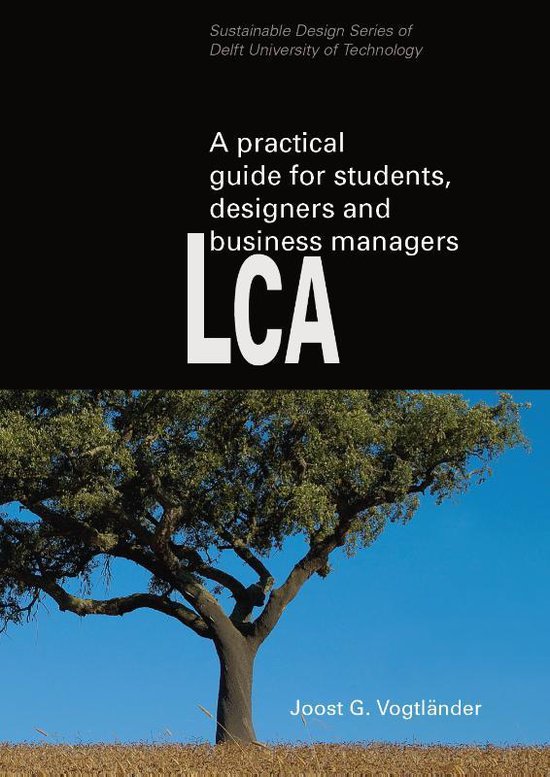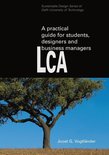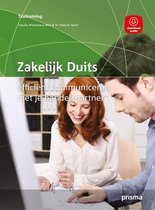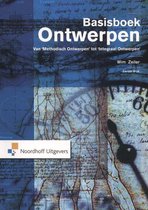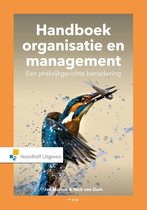A practical guide to LCA for students designers and business managers cradle-to-grave and cradle-to-cradle
Afbeeldingen
Sla de afbeeldingen overArtikel vergelijken
- Engels
- Paperback
- 9789065623614
- 03 november 2014
- 122 pagina's
Samenvatting
Life Cycle Assessment (LCA) is a well-defined method to calculate the environmental burden of a product or service. However, LCA has been made (needlessly?) so complex that it seems to be a job for specialists only. The specialists jargon ('functional unit', 'fate analysis', 'midpoints', 'endpoints', 'attributional modelling', etc.) makes it even more impossible for non-specialists to find out what they need to know to make an LCA. The recent LCA manual of the International Reference Life Cycle Data System of the EU is an excellent document for those people who like to become expert. The focus is on all the (theoretical) aspects of LCA: 80% of the text is on how to make an LCI (Life Cycle Inventory) and perform the Life Cycle Interpretation, including data quality checks and formalities on the reporting. However, the vast majority of students, designers, architects and business managers (and their consultants) never make LCI emission lists, nor write extensive reports on the interpretation. Most of them apply LCIs of databases of other parties (like the Ecoinvent database), apply existing single indicator systems (like eco-costs, carbon footprint, CED, BEES, Recipe, etc.), and draw simple conclusions on what seems to be the best solution in terms of environmental burden. Students tend to make LCAs by using computer software. They quickly learn how the input works, regard the calculation as a black box, and watch how the output varies with the input. Basically, they make the LCA by instinct and common sense. However, not all students are equal: some appear to have a much better instinct and common sense than others. Some issues in LCA are too complex to be tackled by common sense only. So these people need a little help and practical guidance. When I realized the abovementioned situation, I decided to write this Practical Guide to LCA, starting with the common sense, and build on it with practical solutions for, sometimes, complex issues (like recycling). The examples are given in eco-costs; however, most of the examples are identical for other single indicators, like BEES, Ecological Scarcity, Ecoindicator 99, Recipe, Carbon Footprint, etc. After two years of intensive use of the First Edition, the Second Edition as issued, with two extra issues: how to define the Functional Unit and the Declared Unit, and how to structure recycling calculations. The Third Edition is based on eco-costs 2012 data.
Productspecificaties
Wij vonden geen specificaties voor jouw zoekopdracht '{SEARCH}'.
Inhoud
- Taal
- en
- Bindwijze
- Paperback
- Oorspronkelijke releasedatum
- 03 november 2014
- Aantal pagina's
- 122
- Illustraties
- Met illustraties
Betrokkenen
- Hoofdauteur
- Joost G. Vogtländer
- Tweede Auteur
- Joost G. Vogtländer
- Hoofduitgeverij
- Delft Academic Press
Overige kenmerken
- Editie
- 4
- Product breedte
- 170 mm
- Product hoogte
- 11 mm
- Product lengte
- 239 mm
- Studieboek
- Ja
- Verpakking breedte
- 170 mm
- Verpakking hoogte
- 11 mm
- Verpakking lengte
- 239 mm
- Verpakkingsgewicht
- 296 g
EAN
- EAN
- 9789065623614
Je vindt dit artikel in
- Taal
- Engels
- Boek, ebook of luisterboek?
- Boek
- Studieboek of algemeen
- Studieboeken
Kies gewenste uitvoering
Bindwijze
: Paperback
Kies je editie
(2)
Prijsinformatie en bestellen
Vaak samen gekocht
-
Praktijkgericht onderzoek in bedrijf TweedehandsAdviesprijs €25,95 €20,95Verkoop door
Studieboekenworm
Rapporteer dit artikel
Je wilt melding doen van illegale inhoud over dit artikel:
- Ik wil melding doen als klant
- Ik wil melding doen als autoriteit of trusted flagger
- Ik wil melding doen als partner
- Ik wil melding doen als merkhouder
Geen klant, autoriteit, trusted flagger, merkhouder of partner? Gebruik dan onderstaande link om melding te doen.
